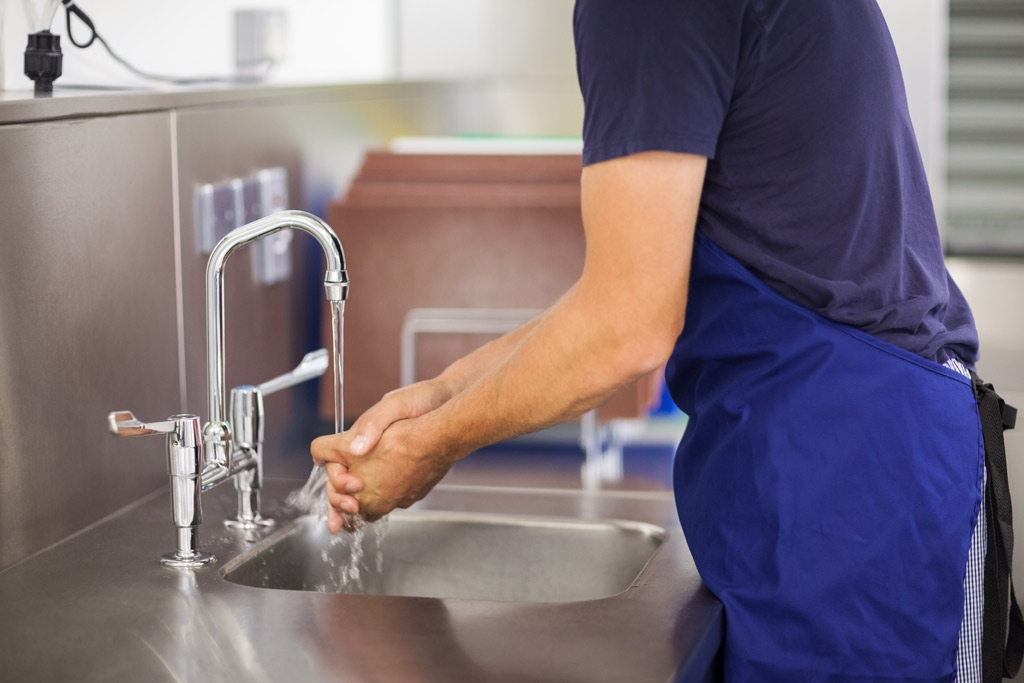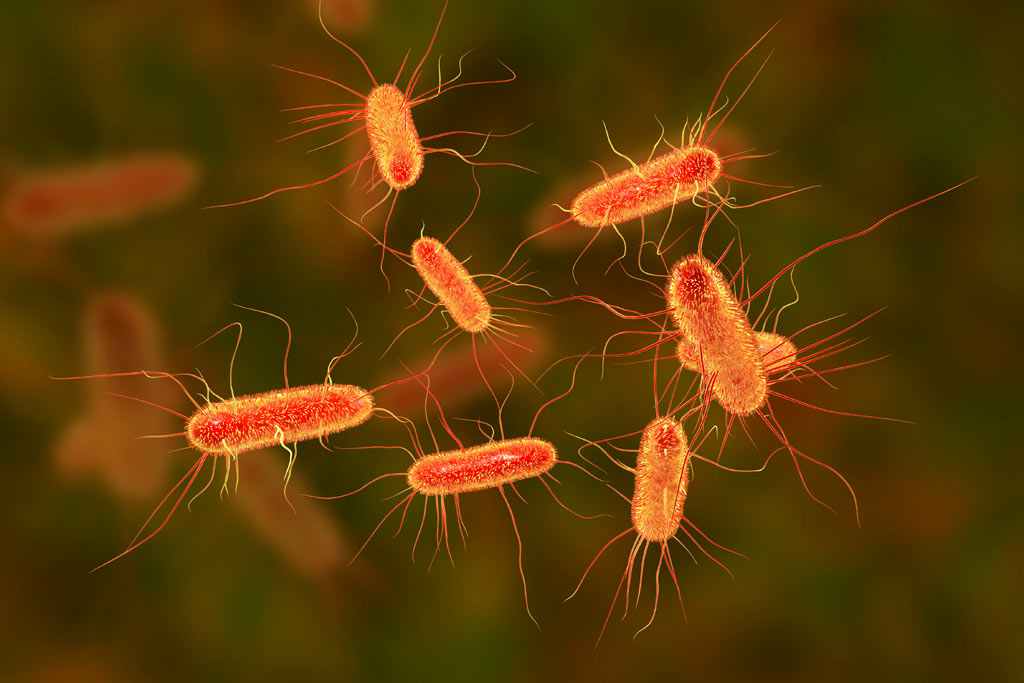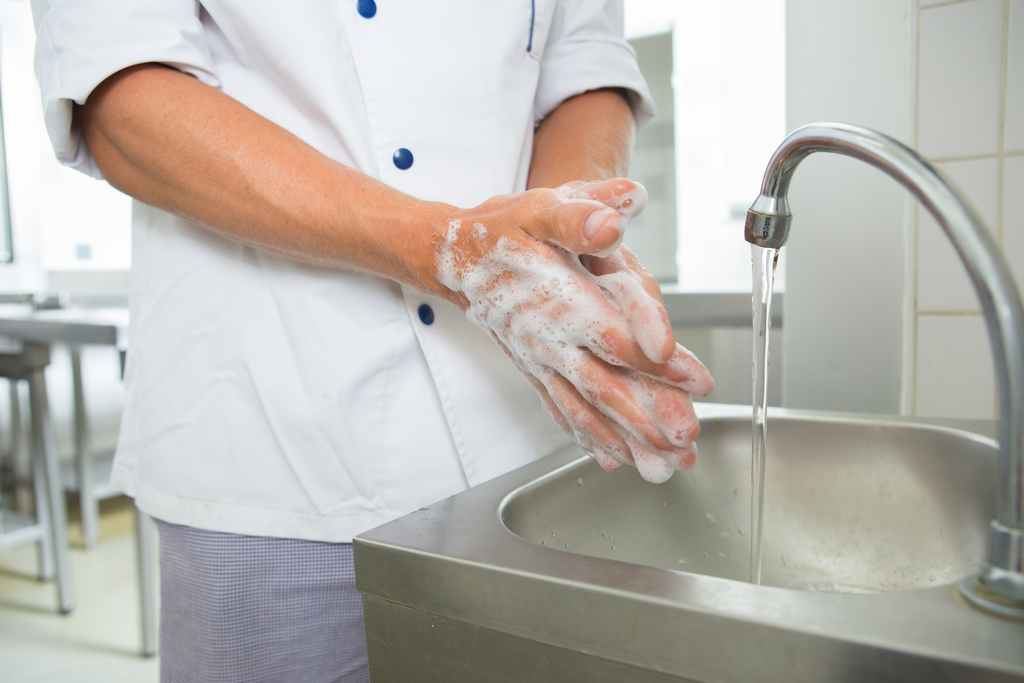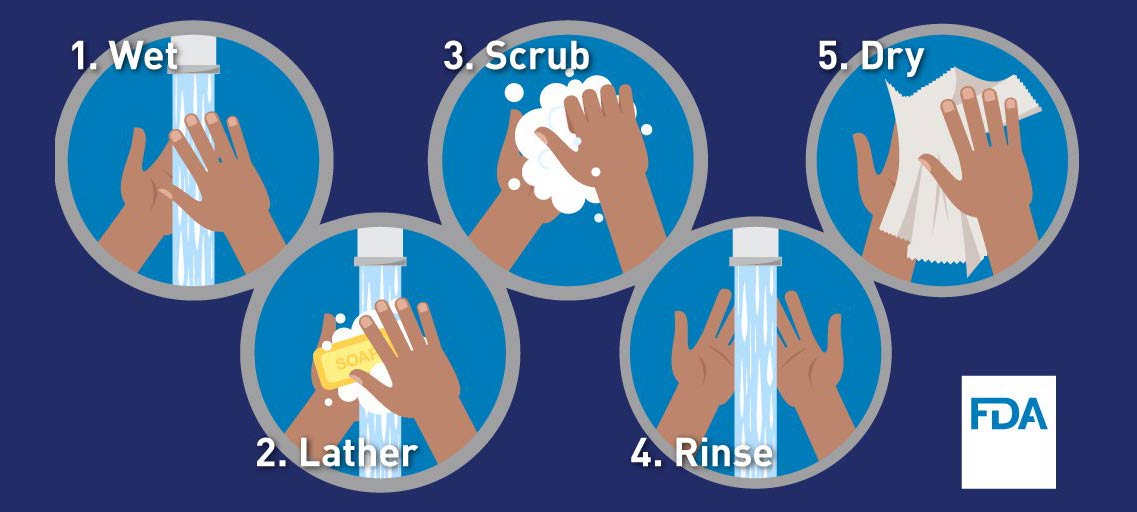Hand washing is essential in preventing contamination of food by food handlers. Harmful bacteria such as E. coli, Salmonella, and other viruses or toxins present on the hands of food workers are removed by proper hand washing techniques.
Washing hands prevents illnesses and spread of infections
The hands of food employees can be colonized with microorganisms such as Staphylococcus aureus or contaminated with organisms from human fecal material, such as norovirus, Shigella spp., hepatitis A virus, E. coli O157:H7, or Salmonella Typhi, or contaminated from raw animal foods, with E. coli O157:H7 and Salmonella spp.
- Learn about foodborne pathogens, cross contamination, cold and hot food safety, and best practices to prevent foodborne illness.
- Food Manager ANSI Certification: $99.00 - Valid in all States
- Food Handler Training: Only $7.00!
- 10% OFF: Enter Promo Code "train10off" at Checkout
These and other pathogenic microorganisms can get on the hands from a number of sources and then move from hands to food during preparation and service.
Proper Handwashing for Food Handlers
The spread of germs from the hands of food handling and service workers to food is an important cause of foodborne illness outbreaks in restaurants. In fact, it caused 89% of outbreaks in which food was contaminated by food workers.
Proper handwashing can reduce germs on workers’ hands. It can also reduce the spread of germs from hands to food and from food to other people.
How often should food workers wash their hands?
The U.S. Food and Drug Administration (FDA) advises that hands should be washed as often as necessary and always before:
- Before preparing or making food
- Before putting on gloves to prepare or make food
- Before starting work
FDA also advises that hands be washed after:
- After eating, drinking or smoking
- After blowing nose, sneezing or coughing
- After handling dirty equipment
- After handling waste
- After cleaning duties
- After using the toilet
- After handling money
- After touching the body (such as scratching your nose).
Proper Handwashing Steps
Proper handwashing can greatly reduce the risk of spreading bacteria. A proper handwashing routine include these 5 steps:
1. Wet hands
2. Lather with soap
3. Scrub for at least 20 seconds
4. Rinse for 10 seconds
5. Dry with clean towel
Additional Handwashing Resources
- Global Handwashing Day (October 15th – A annual event to increase awareness and understanding about the importance of handwashing to prevent illness, diseases and save lives.)
- Handwashing: Clean Hands Save Lives (CDC)
- Handwashing and Nail Hygiene (CDC)
- Hand-washing: Do’s and Don’ts (Mayo Clinic)
- Plain soap and water are best! Antibacterial soaps are not needed (Tacoma-Pierce County Health Department, PDF 2 KB)
- Wash Your Hands (:30) (CDC)
- Clean Hands Save Lives! (CDC, PDF 390 KB)
- Double Handwashing Posters (Texas A&M University Food Safety)
- Double Handwashing Poster – PDF in English 489 KB)
- Double Handwashing Poster – PDF in Spanish 488 KB




